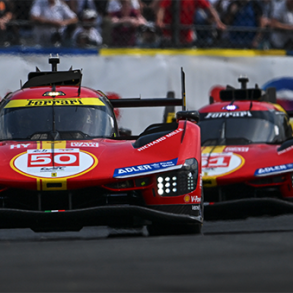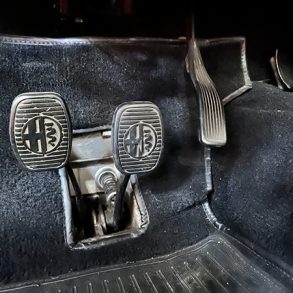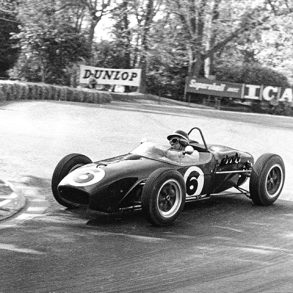Are you familiar with the “Trickle Down” theory? If not, you may be soon. As background, the theory was first postulated in the early ’80s to describe the flow of items from the top of the food chain down to the bottom. Various academicians, including economists and sociologists, conducted lengthy studies resulting in thousands of pages of sobering reports to demonstrate the fact that they could isolate only two socioeconomic substances that flowed in a trickle-down model… money and shit. Speaking from experience, I can’t substantiate the former, but I can certainly vouch for the later.
Here, once again, you may find yourself muttering, “Casey, marvelous bit of academic research and all, but what does this have to do with the octane in my OSCA?” Well, I’m glad you asked. While you may not be totally cognizant of it, the smellier form of “Trickle Down” is working its way through the motorsport community and is beginning to make its way down to the historic racing level of the food chain.

In essence, it works something like this… at the top of the racing food chain are the big professional series, Formula One, CART and NASCAR. These are the “pinnacle” of motorsport in terms of money, audience size and, therefore, clout. Essentially, they call the shots. Now, as you are likely aware, these organizations are no longer just sanctioning bodies, they are major corporations that are ultimately accountable to Wall Street and their shareholders/investors.
For sometime now, these 300-pound gorillas have been putting the squeeze on the folks on the next rung of the motorsport food chain, the track owners. Their mandate has been simple, invest millions of dollars in improving your infrastructure and facilities or lose your premier, cash-generating events. Oh, and by the way, we also want significantly larger sanctioning fees, as well. Nice work, if you can get it.
This obviously leaves the track owners at places like Silverstone, Laguna Seca, Elkhart Lake, Sears Point and Mid-Ohio in a bad position; they don’t want to lose their marquee events, but at the same time they can hardly afford to keep them. So what happens? Ah, yes, the “Trickle Down” effect. In this case, the doody continues to flow downhill. And who’s standing at the bottom of the hill, peering up at the top with their mouths wide-open in awe? You guessed it. We are – the rank-and-file club racers.
The track owners are, in some cases, investing as much as $10-$60 million into improvements, while the top tier sanctioning bodies are looking for even more in sanctioning fees to appease their investors and stockholders. The money has to come from somewhere, so the only resort left to the track owners is to significantly raise track rental fees. And when I say significantly, I am talking about as much as double for some basic nonspectator club events.
Now, if you find this hard to believe, you have to look no further than what’s going on at tracks like Silverstone and Laguna Seca. Both are in the process of making major investments (as much as $60 million in Silverstone’s case) in improving their facilities, and both are defraying some of the costs by drastically raising club event fees and demanding larger fees for spectator historic events. This has resulted in Silverstone losing the annual Coys Festival and a lengthy struggle between Laguna Seca and Steve Earle over the future of the Monterey Historics (which has fortunately just been resolved). The point here is that once the fragrant stuff starts trickling downhill, it’s pretty hard to stop. If Wall Street and the professional organizations continue to apply financial pressure from the top, eventually we are going to feel the squeeze more and more near the bottom. Do you want to pay $750-$1000 in entry fees for an average race weekend?
Interestingly, at the end of November, some of the tracks here in the U.S. began to fight back. The track owners from some nine CART race venues, including Laguna Seca, Mid-Ohio, Elkhart Lake, Chicago and Montreal sent a signed letter to CART CEO Joseph Heitzler stating that if CART continues its push for higher sanctioning fees (as some of its major stockholders are urging), they will ban together and completely boycott the series. Could this mark the dawning of the “Trickle UP” theory. Let’s hope.










